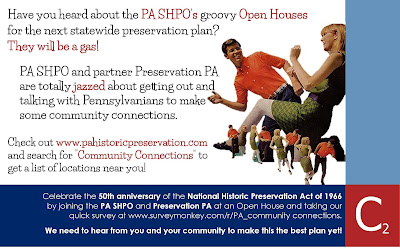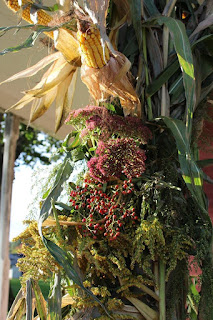Today's guest post is by Corine Lehigh, an archival clerk at the PA State Archives. She is currently attending Penn State Harrisburg for her graduate degree in American Studies. Corine has contributed to Trailheads several times, including her first post as an Archives intern. Please note that there is some slightly graphic historical description below - don't say you weren't warned!
Powwowing, or brauche in the Pennsylvania Dutch dialect, is a magico-religious practice whose chief purpose is the healing of physical ailments in humans and animals. It has had other aims as well, such as conferring protection from physical or spiritual harm, bringing good luck, and revealing hidden information. Powwowing has been practiced in Pennsylvania since the first German-speaking Protestant settlers arrived in the 18th century. Prior to the late 20th century, powwowing was practiced routinely by the descendants of these European settlers.
Don Yoder, a recognized expert on Pennsylvania German folklore and customs, considered powwowing to be based on ancient religious healing traditions sanctioned by the Roman Catholic Church. It was driven underground among Protestant populations, such as the Pennsylvania Dutch, and placed into the hands of lay practitioners. Its more direct antecedent was the book The Long Lost Friend, written in 1820 by Berks County healer John George Hohman. Eight to twelve powwow practitioners still live and work in south central PA today. Powwowing rituals involve the use of one or more acts, varying between incantations, gestures and body position, and manipulation of physical objects. Modern powwowers have their recipes committed to memory and none of them use any of the charm books historically employed by powwowers, such as The Sixth and Seventh Book of Moses, Egyptian Secrets, or The Long Lost Friend.
Nelson Rehmeyer, of York County, was an alleged powwower in the 1920s. His neighbor John Blymire reportedly had a run of bad luck, including losing his job. Blymire consulted the local river witch, another powwower named Nellie Noll. Nellie told Blymire that his bad luck was due to a hex that Rehmeyer had put on him. Nellie told Blymire that he needed to steal Rehmeyer’s spell book, along with a lock of his hair, and bury both 6 feet underground. On Nov. 28, 1928, Blymire and two local accomplices went to Rehmeyer’s house to retrieve the items. Rehmeyer confronted them. Blymire and the two local boys tied Rehmeyer up, beat him, and strangled him to death. They then set his body on fire. The house withstood the fire, which was put out by heavy rainfall that day. However, the spot where Rehmeyer’s body burned left a charred spot on the wood floor. The case quickly drew national attention. Blymire and his accomplices were jailed. Despite this, Blymire stated until his death that once Rehmeyer was dead, his bad luck was gone. Rehmeyer’s house still stands in southern York County, and some say it is haunted by his spirit, still not at rest.
(Editor's note) For more information on Pennsylvania German culture, the history of powwowing, or the Hex Hollow case:
- Landis Valley Village and Farm Museum interprets the lives and culture of Pennsylvania Germans; the Landis Valley Cookbook includes a chapter on powwowing and other medical traditions
- The upcoming Winter 2017 issue of Pennsylvania Heritage magazine will include an article, "Powwowing: Ritual Healing in Pennsylvania Dutch Country," by Patrick J. Donmoyer
- David W. Kriebel's 2007 book, Powwowing Among the Pennsylvania Dutch (Penn State University Press), explores the past (including the Hex Hollow case) and present of the practice
- The York Daily Record just last week posted a story about the Hex Hollow murders on their York Town Square blog









